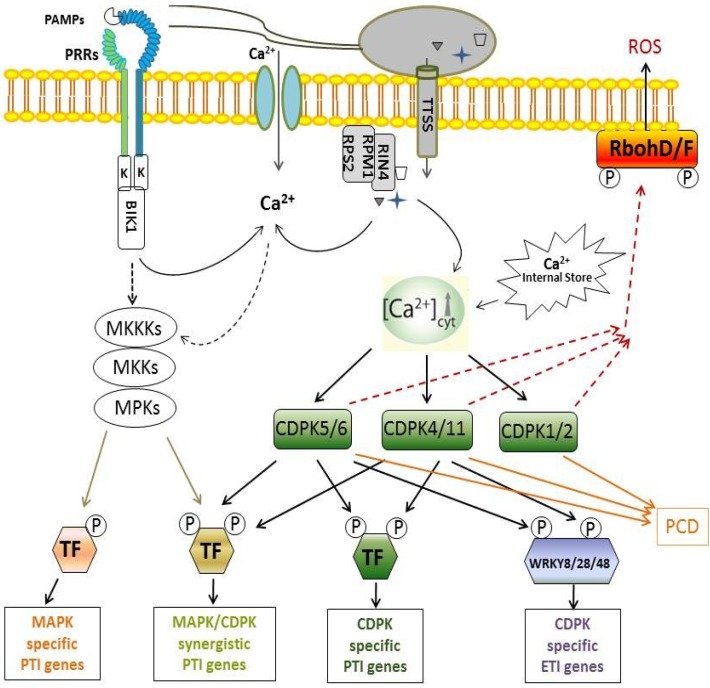Figure 1.
Model of calcium-dependent protein kinase (CDPK)-mediated plant innate immune signaling. Plants employ cell surface pattern-recognition receptors (PRRs) or intracellular nucleotide-binding domain leucine-rich repeat (NB-LRR or plant NLR) proteins to perceive pathogen-associated molecular patterns (PAMPs) or effector proteins, respectively. The signatures of increased cytosolic calcium (Ca2+) levels triggered by interaction of PAMP-PRR or effector-NLR are sensed by specific CDPKs, which trigger subsequent activation of distinct immune events. CDPKs could act synergistically or independently with the mitogen-activated protein kinase (MAPK) cascade, which consititutes three tiered kinases, MAPK (MPK), MAPK kinase (MKK) and MKK kinase (MKKK), in regulating reactive oxygen species (ROS) production and transcriptional reprogramming in PAMP-triggered immunity (PTI) signaling. On the other hand, CDPKs phosphorylate distinct substrates in regulating bifurcate effector-triggered immunity (ETI) signaling, including phosphorylation of WRKY8/28/48 transcription factors (TF) for immune gene expression and respiratory burst oxidase homolog D/F (RbohD/F) for ROS production.

